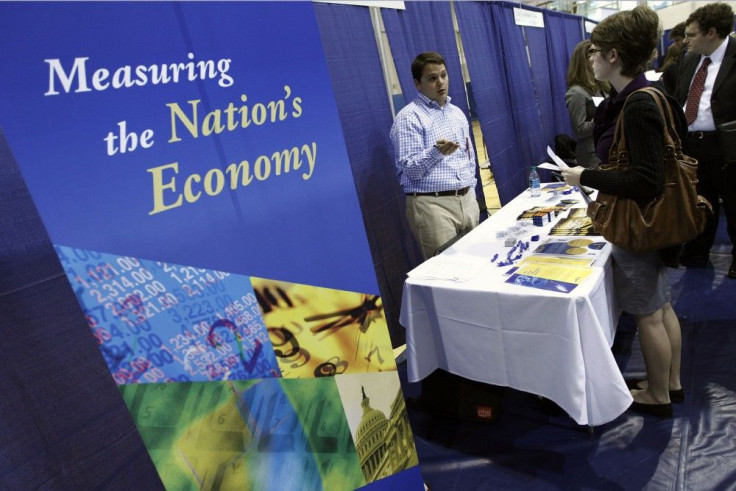US Jobless Claims Edged Down To 367,000 Last Week

Fewer Americans than expected filed for jobless benefits last week, calming some concerns about the jobs market recovery after a disappointing April employment report. However, many signs point to the fact that companies are still very cautious about adding workers.
In the week ended May 5, applications for unemployment insurance payments decreased by a modest 1,000 from the previous week's upwardly revised figure of 368,000, to 367,000, according to data from the Labor Department that was issued on Thursday in Washington. That came in below market expectations for a 369,000 reading.
The four-week moving average, which normally provides a better indication of the underlying trend in labor markets than the weekly number of jobless claims, was 379,000, a decrease of 5,250 from the previous week's revised average of 384,250 for first-time benefit applicants.
Earlier in the year, we had some unusually high numbers of job growth because the warmer weather allowed construction companies to hire people to continue working, Sharon Stark, chief fixed income strategist at Sterne Agee in Birmingham, Ala., said before the report. So, you didn't see the kind of growth in the spring that you normally would have.
Going forward, I think companies are going to be very careful in adding workers, so the job growth you are going to see will likely be in the temporary health category, leisure and hospitality, and retail, where the labor pool is a lot more flexible.
The number of people filing for benefits after an initial week of aid decreased by 61,000, to 3.23 million in the week ended April 28, the lowest level since July 2008.
The continuing claims figure does not include the number of Americans receiving extended benefits under federal programs.
The four-week moving average for the week ended April 28 fell by 10,500, to 3.29 million, from the preceding week's revised average of 3.30 million.
Nonfarm Payrolls
Job gains are of great importance because they lead to income growth, and that supports consumer spending, which accounts for more than 70 percent of the U.S. economy.
Nonfarm payrolls rose by 115,000 last month, the smallest gain since October 2011, while private-sector employers added 130,000 jobs, the Labor Department said Friday.
The unemployment rate, which is obtained from a separate household survey, dropped to 8.1 percent in April from 8.2 percent in March on declining labor-force participation.
A closer look at April's government jobs report reveals a shocking truth: Only 5 percent of the increase in the adult population since the Great Recession began in December 2007 has found its way into employment, while the other 95 percent are not in the labor force.
Private companies are too nervous about the future to ramp up hiring, according to a new Sageworks Inc. survey of accountants, bankers and other financial professionals who work closely with these firms.
The whole idea of job creation is really about how business owners feel about their sales numbers, Sageworks Chief Executive Officer Brian Hamilton said in the report. The fear now is that we may be running out of runway before the onset of another recession.
About 32 percent of financial professionals in the survey said their clients aren't hiring because they are concerned about the economy in general, while another 22 percent said private companies have become more risk averse because of lingering anxiety over the last recession.
If you look over a long period of time, the average expansionary cycle is approximately four years, and the average recessionary period is one year. Historically, it has taken approximately 12 to 20 months for unemployment to fall in an expansion to roughly pre-recession levels, Hamilton said.
Right now, we are into the 34th month of the recovery, and yet unemployment remains too high. If we don't get employment up, we may be bumping into the next recession, during which time we cannot expect job growth, Hamilton added.
Stock futures rose. The S&P 500 futures gained 8 points, to 1,359, while the Dow Jones Industrial Average futures added 36 points, to 12,831.
© Copyright IBTimes 2024. All rights reserved.





















